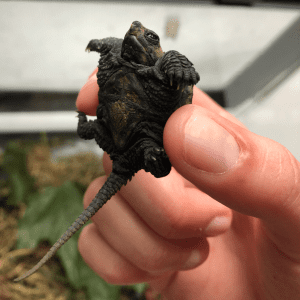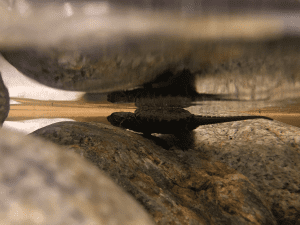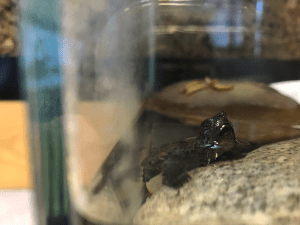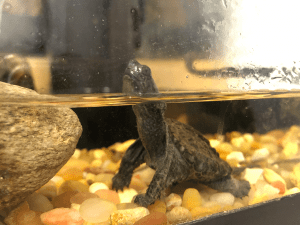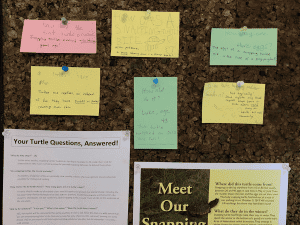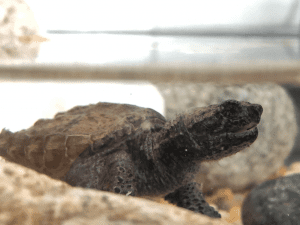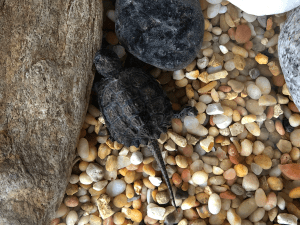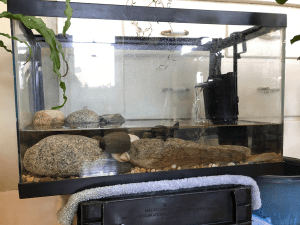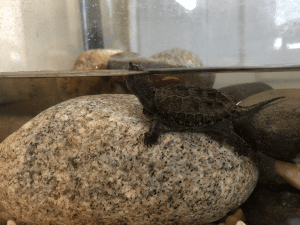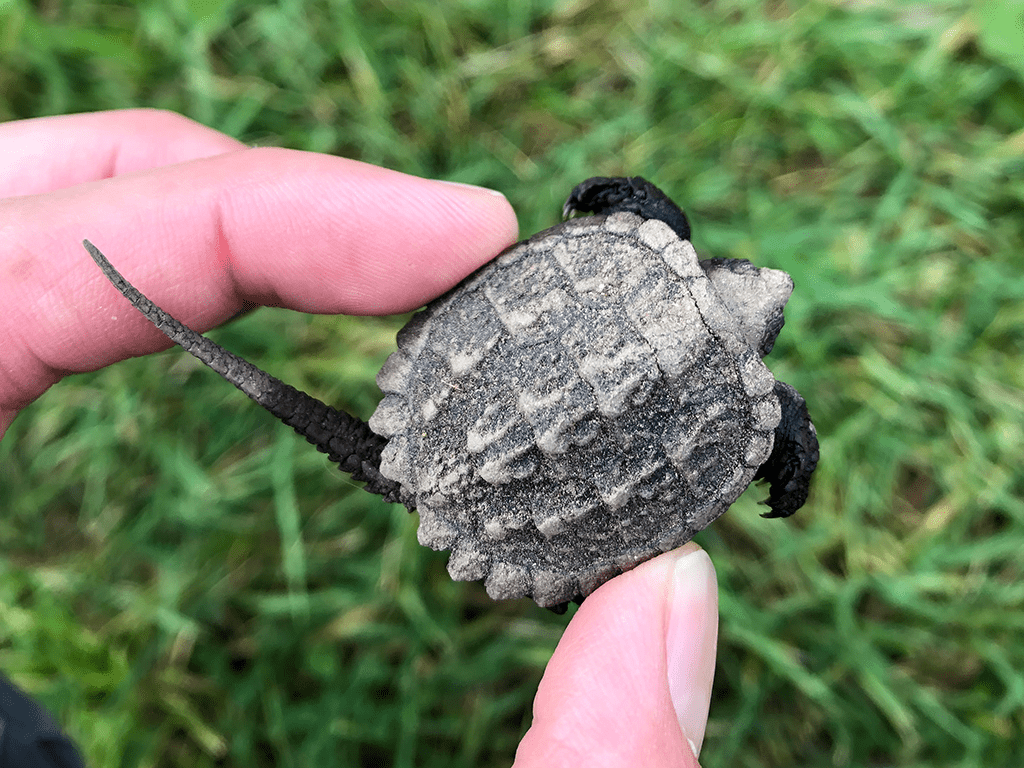
Seven months ago, a nest of Snapping Turtle eggs hatched at the edge of the parking lot at Gilsland Farm. You can read about that eventful day and the decision to overwinter one of the hatchlings in a previous blog post, Introducing Our New Roommate: A Baby Snapping Turtle.
After consulting various experts and the important laws that protect wildlife, we determined that keeping one of the babies indoors for the winter season would allow visitors to learn and connect with this species. Even better, this would allow the baby turtle a chance to grow! Unlike the 20+ other hatchlings who went straight into the muddy pond to wait out winter, our little friend got to eat and get just a little bit bigger. As young turtles have many predators and challenges in their early life, we hoped this would benefit the hatchling!
While living in the Discovery Room of Gilsland Farm’s Education Center, this animal shared the secrets of turtles with so many people! Maine Audubon staff and members, students on field trips, toddlers and families in our Family Fun program, February Vacation Campers and many more got an up close look at an often misunderstood creature. As the turtle grew, traits like the shape of the shell and position of the cloaca helped us to determine that our friend is likely a female! As visitors watched her swim, feed on mealworms, and climb the rocks of her tank they got to see behavior that usually takes place in the dark of a pond. What a special chance to learn from nature up close! A question box and posted answers allowed people, young and old, to be curious and further appreciate one of Maine’s most amazing reptiles.
As we know, Maine Audubon’s facilities were closed in mid-March given the Covid-19 situation. It was still too early to release her back into the pond at Gilsland Farm, so the turtle came home with me to Portland for the spring! We relocated her tank setup to my 3rd floor apartment and I’ve appreciated her company while working from home. That being said, individuals should never take wild animals into their homes. This unique circumstance wasn’t our original plan, and her time at the education centers allowed us to share that experience with the public.
Over the last few weeks, I’ve noticed some big changes in our turtle friend. She’s grown and developed even more than I would have guessed! Sharp, thin nails are now replaced with thick, powerful claws. The small spot on her plastron (bottom shell) where the yolk sac was attached to her shell is almost entirely faded. The flat, round shell is now more domed and pointed. Patterns and colors around the face and eyes have become more defined. Overall, she’s heftier and stronger. I can’t wait for her to use her growth and skills in the pond, where wild turtles should be!
We are releasing this (still little) turtle on Tuesday, May 12, at 10 a.m. on Facebook Live. I’ll give viewers a look at her snappy adaptations, the pond habitat, and we can all wish her luck for her new life in the pond.

